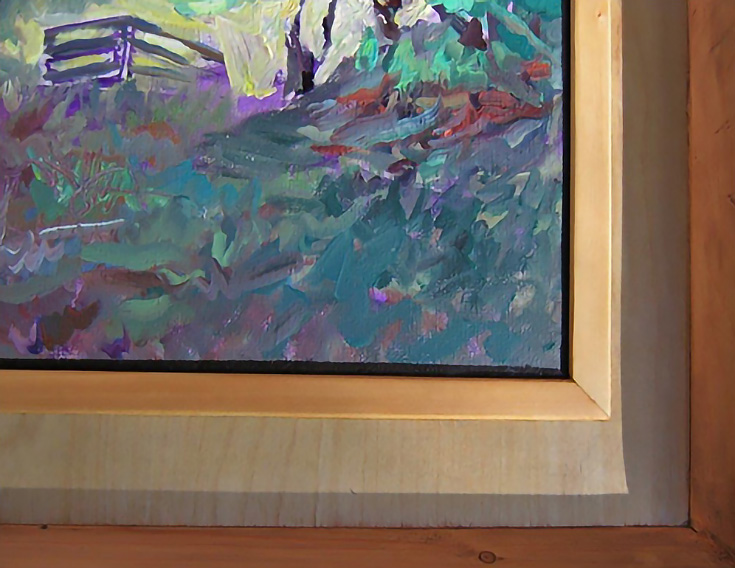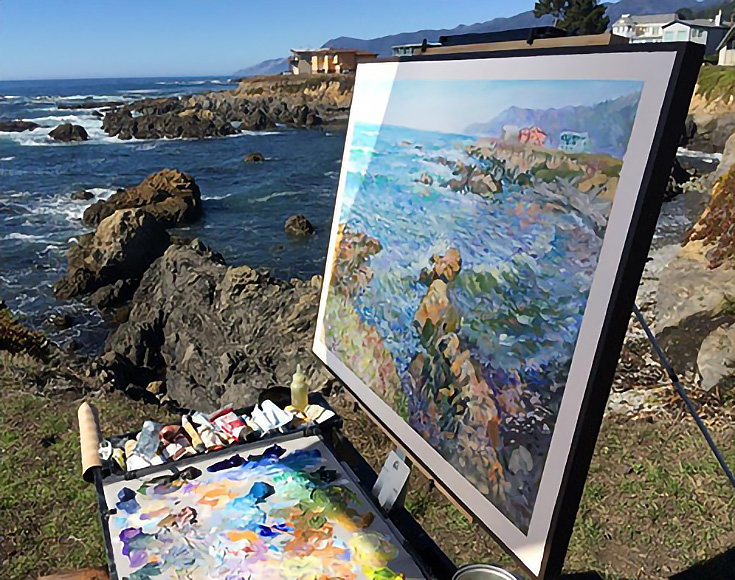Paintings are like children: they grow up, eventually, and move out of the house (hopefully). Along the way, they need to find their own place to live.
That’s what a picture frame is, to my way of thinking—a home for the painting.
The basic function of a frame is to keep the environment from infringing too much, and separate it from that nearby plant and lamp. In an austere room with bare walls, a painting might not need a frame if it’s the only object there. But even then I think a picture tends to float without a frame or border, and you might wake up in the morning to find that it has moved to another wall.
The ways to contain and settle a picture are wide ranging, from no frame at all to the ornately gilded, closed-corner, high-end gallery frame. For my own art, I’ve always used simple yet pleasing frames and borders that add to the harmony of my paintings, with an occasional carved one that gives a special made-by-hand look.
If the wood used is beautiful, and its color compliments the painting, I often go with a natural finish. On the other hand, sometimes I feel the need to paint the wood frame with a color and value that will harmonize with the painting and really make it sing.
My personal rule, however, is this: never make the frame more exciting than the painting. And that’s why I don’t use the classic gold leaf sculptural frames—well that, and they’re always pretty expensive.
So lately I’ve hit upon the idea of painting two or three borders on the actual canvas, using acrylic paint so it dries fast. Done correctly, this creates a very pleasing look and fulfills the main function of a frame, without adding to the cost of the painting. You can even paint the border before you do the painting itself.
I just mask the edges off before I start, and run my fingernail back and forth along the edge of the tape so the canvas texture won’t show through. As I paint, the borders stay pristine, and then when the day is done I pull the tape away. Voila! A framed picture. It’s an exciting end to a hard day’s work.
NOTE: This method works especially well on a stretched canvas where the outside edges are painted and incorporated into the overall design. But, it can certainly be used on thin rigid panels too.
Ultimately, whether you frame your art or not is a matter of personal choice. But if you believe that a painting needs to look like it belongs somewhere, then why not give it a home of its own, before it leaves your hands?
My guess is your potential buyers will think it’s a little more special, too.
To learn more about Steve Ladd and his art, please visit www.gubbart.com.
This post may contain affiliate links.


